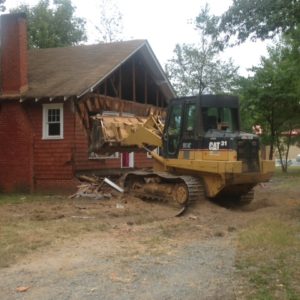 Setting the rental rate of your investment property is as much of an art as it is a science. As controversial as this topic maybe, it’s often misunderstood from the onset. Here’s just one BIG angle to consider. I ask that you keep an open mind and understand that the variables are great -keep an eye towards additional posts to Maximum Cash-Flow with Rentals. Often I find myself conservatively setting a rate on a home at $25-75/month less then my fellow investor. It is one of the most glaring divergences I have with others (2nd place goes to property valuation) and causes me much consternation. I constantly analyze and try new techniques; however, I usually end up at the same spot. My conclusion is that the science of it sets a base rental rate with the art creating both the flexibility and longevity of that difference.
Setting the rental rate of your investment property is as much of an art as it is a science. As controversial as this topic maybe, it’s often misunderstood from the onset. Here’s just one BIG angle to consider. I ask that you keep an open mind and understand that the variables are great -keep an eye towards additional posts to Maximum Cash-Flow with Rentals. Often I find myself conservatively setting a rate on a home at $25-75/month less then my fellow investor. It is one of the most glaring divergences I have with others (2nd place goes to property valuation) and causes me much consternation. I constantly analyze and try new techniques; however, I usually end up at the same spot. My conclusion is that the science of it sets a base rental rate with the art creating both the flexibility and longevity of that difference.
Did that make any sense? LOL
The market sets the market rent for a home based on supply & demand with a few key variables that greatly dictate any distortion:
- Location
- Credit & Financial Stability
- Condition & Economic Obsolescence
What is our common goal with a rental? To create a reliable steady stream of rental income over time to provide us with positive cash flow, tax deferral, and long-term wealth with debt reduction and appreciation (in both rental rates and property valuation). Right!?!
Analyzing a prospective tenants credit and financial stability is the main key factor of distortion that occurs from one landlord to another. What do I mean? In basic economic theory, one can assert that a neighborhood will only attract an average basic family income (say the neighborhood average income is $40k) with some distortion based on no financial motivations. So if we all agree that we can approve a prospective rental applicant who meets a 3X gross income -what would be the average rental rate in that neighborhood (assuming all other variables are constant/equal)? $1111.11/mo. That’s at gross income of $3,333.33/mo before taxes, insurance, and perhaps -401K. I then go to the credit report and then deduct car, credit card, and any other monthly obligations. Then think about utilities, food, gas, cloths, entertainment, etc., etc. In today’s environment that can even be a challenge with the amount of times we are left analyzing shattered credit looking for any signs of viability let alone stability. So what can the average applicant for this neighborhood really afford?
Do you see were I’m going with this?
I’ve got one Landlord trying to rent his home for $1250/mo in this average neighborhood were the average affordability rate is $1111/mo and we probably are facing credit headwinds that say the average prospective applicant cannot even afford that. I often get blank stares when I say that I would rent the home for $995/mo.
Now -before you blow me off in a tirade and put the blinders on just let this sink in. Sure, I understand the difference and potential for lost cash flow compounded over 30 years. What my macro goal is to create a relationship where my rental resident wants to (let alone has the ability to) stay in my home for the long term. I make more money and (just as importantly) have less headaches, and time constraints when I can master the art of promoting long term tenants who stay 2, 3, 5, 15+ years versus another landlords annual tenant turnover rate. Did you read my “Slow the Turn” article? If on average one prices above the market rent, odds are that they will help accelerate their tenant turnover rate. Yes if one over improves a house (even for the neighborhood) one can reasonably assume they may get an above average rental rate; however, people rarely appreciate improvements (let alone over improvements) versus cost. What I find is that over time (and within the 1st year), the tenant that will pay for it to move in often will move on for a better deal more associated to daily living costs versus fit and finish details based on that particular neighborhoods norm.
Ok -so our you now saying “Great -how does that help me now in today’s environment and what I’ve paid/owe on my current rental investment portfolio?”
I’m not advising change if your business plan works; however, if it isn’t look at what changes you can create both long-term and short-term. If your in this for the long-term, then you are probably looking to add new rentals to your portfolio. What I challenge you to do is access your market rents for the neighborhood before buying that rental property and thus, adjust your purchase price variable based on this market rate.
Believe me. I want as much monthly positive income as possible too. However, I’ve discovered I make more monthly positive income over the long term by not fighting individual neighborhood market rates. This is why I’m a big believer in purchasing in neighborhoods I believe that will appreciate at a greater rate then the city average.
Guess what happens when this occurs?
When a neighborhood is appreciating (on average) at a rate greater than the city average, that means the desirability of that neighborhood (location) is improving and attracting buyers that have greater purchasing power (average neighborhood income is increasing), and thus not only increasing the value of my rental investment but the average rental rate (and, thus cash flow) too! That’s a mouthful -huh?
As a landlord, we are focusing on creating a steady stream of positive cash flow and wealth over the long term. Remember being a landlord is primarily a long term wealth creator. Quit thinking all about today and focus on the big picture.
Tyler McCracken – A NC Real Estate Investor
The GOAL OF THIS POST -is to provoke thought! If turnover is constant with your landlording, then its something to consider. This only looks at one economic constant from the scientific data and doesn’t even take the Art of Landlording into context.
Part 1 of a REAL Real-Estate Investor’s viewpoint of achieving Maximum Cash-Flow with Rentals.
August 29th, 2010


